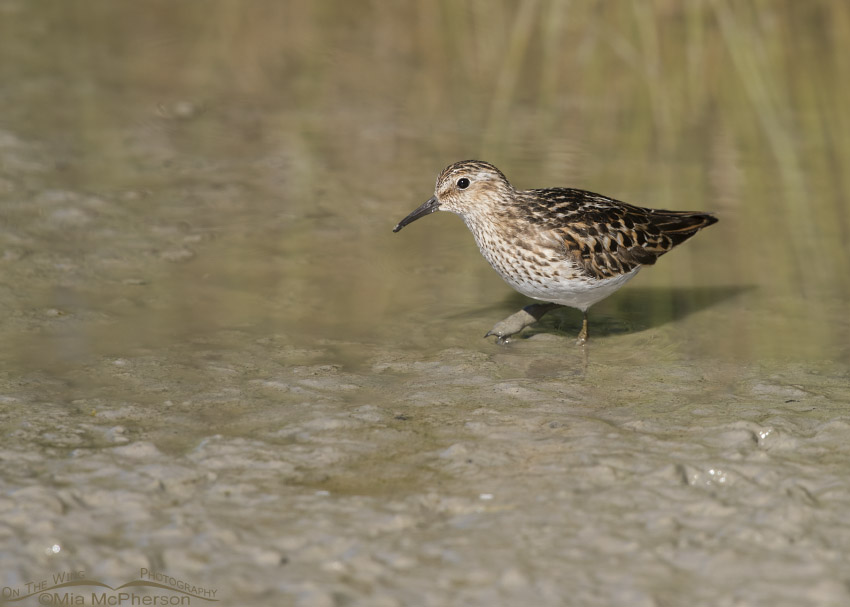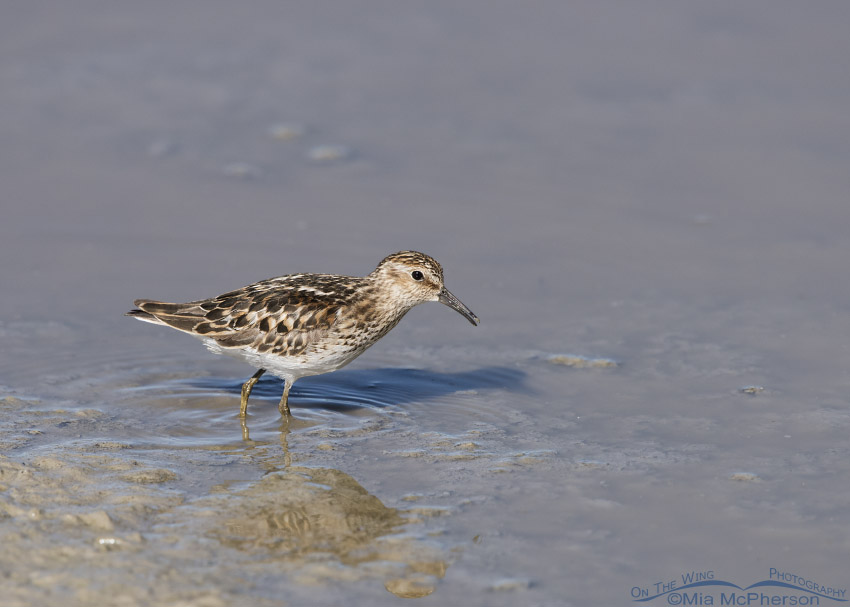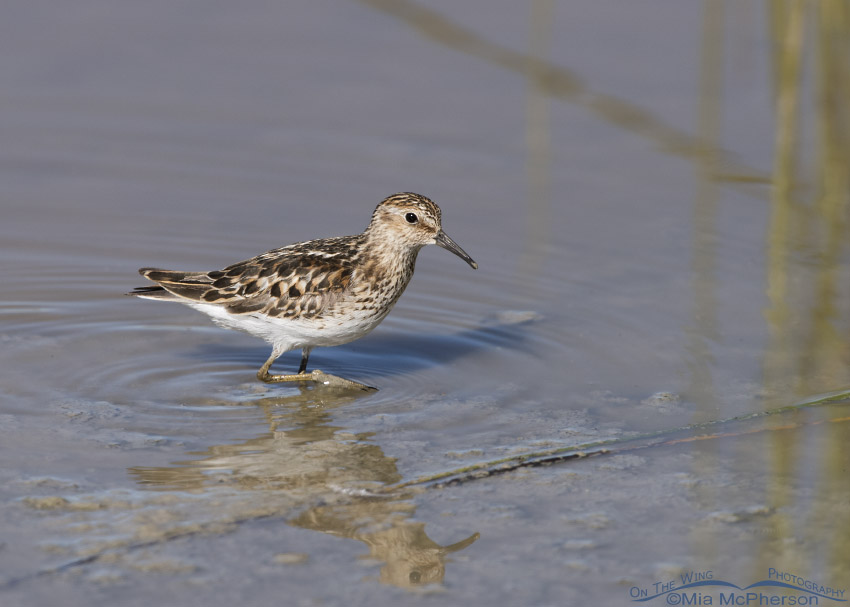 Least Sandpiper with a mud-covered foot – Nikon D810, f7.1, 1/1000, ISO 400, Nikkor 500mm VR with 1.4x TC, natural light
Least Sandpiper with a mud-covered foot – Nikon D810, f7.1, 1/1000, ISO 400, Nikkor 500mm VR with 1.4x TC, natural light
I photographed this migrating Least Sandpiper in the same pond as the Wilson’s Phalarope chick at Red Rock Lakes National Wildlife Refuge but on different days. Least Sandpipers breed in wet tundra, coastal wetlands, bogs, sedge meadows, and heaths in Alaska and across northern Canada to Labrador and Nova Scotia. They breed early and begin their fall migration early too.
 Least Sandpiper foraging in an alkali pond – Nikon D810, f7.1, 1/1600, ISO 400, Nikkor 500mm VR with 1.4x TC, natural light
Least Sandpiper foraging in an alkali pond – Nikon D810, f7.1, 1/1600, ISO 400, Nikkor 500mm VR with 1.4x TC, natural light
This Least Sandpiper was actively foraging in the alkali pond out in the open which made it easy to photograph. I am not sure was prey it was finding but whatever it was it must have been very tiny.
I believe that this bird might be a female because their bills are a bit longer than the males. These tiny shorebirds only weigh about one ounce and are the smallest shorebird in the world or about half of what the Northern Pygmy-Owl I photographed the other day weighs.
 Least Sandpiper in Beaverhead County – Nikon D810, f7.1, 1/1600, ISO 400, Nikkor 500mm VR with 1.4x TC, natural light
Least Sandpiper in Beaverhead County – Nikon D810, f7.1, 1/1600, ISO 400, Nikkor 500mm VR with 1.4x TC, natural light
This was the only Least Sandpiper I saw on the alkali pond that day but since they are so small I might have missed seeing more because of the height of the vegetation near the pond.
It is only July so it seems difficult to think that some species have already begun their fall migration and that more will soon follow even though it is still so darn hot.
I am enjoying the cooler temps where I am camping in Idaho though and the brisk mornings have felt refreshing and invigorating. I will hate to leave here and head back to the heat of the Salt Lake Valley when it is time to go.
Well, I am off on another adventure today and hope that I find birds, wildlife, wildflowers and spectacular scenery to photograph.
Life is good.
Mia
Click here to see more of my Least Sandpiper photos plus facts and information about this species.


I love these images! Especially the last two with their great reflections….
Beautiful images Mia. The Sandpipers are very attractive.